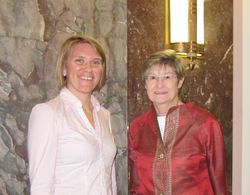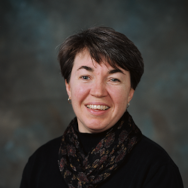Cruising the halls of Congress can be fun when you’re side by side with leading physicians and scientists. I think I started to get a little bit smarter last week when I spent time on the hill with our coalition partner experts… Osmosis works that way right? We met with sixteen U.S. Senate offices in support of real reform of our toxic chemical laws.
Senate offices really sit up and take notice when people outside “the Beltway” (aka Washington D.C.) bring real world experience of exposure to toxic chemicals to their attention. Whether you’re a leading scientist, a passionate physician or a parent, Senate offices take note when people outside the D.C. network visit.
I was thrilled to join Dr. Mark Mitchell, Co-chair of the National Medical Association’s Environmental Health Task Force, and Dr. Susan Shaw (on the right with Lindsay), the president and founder of the Marine Environmental Research Institute and a professor in the Department of Environmental Health Sciences at the State University of New York School of Public Health in Albany, as we educated the masses about the need for stronger laws on toxic chemicals.
What I learned from Dr. Shaw
Firefighter study shows long-term risk of cancer
We know that firefighting is a dangerous job—these brave people run into situations that most of us run away from—but a study released in January showed that firefighters are at risk for cancer and serious health effects from their occupational exposures.
Dr. Susan Shaw was the lead scientist on a pilot study of 12 San Francisco firefighters that showed evidence that firefighters are exposed to high levels of cancer-causing chemicals including brominated flame retardants and their combustion by-products. These chemicals and byproducts formed during fires in the average American home or office from burning foam furniture treated with toxic flame-retardants, televisions, computers and other building materials.
According to the peer-reviewed study, the firefighters had concentrations of a common flame retardant, polybrominated diphenyl ethers (PBDE’s), two to three times higher than those of other Californians and the general U.S. population. Burning materials release the chemicals into the air, which were then inhaled by the firefighters.
One of the authors of the study is Tony Stefani, a retired firefighter who provided incredibly compelling testimony about firefighter exposure and his own cancer diagnosis when he appeared before the Senate Environment and Public Works Committee last summer.
This was a pilot study “…but in light of the results, larger studies are planned on both male and female firefighters across the U.S. The findings also underscore the need for stronger regulations to protect not only firefighters but all Americans from exposure to toxic, carcinogenic chemicals in everyday consumer products.”
What I learned from leading physicians
Physicians are seeing real life increases in health problems, big opportunity for prevention
National Medical Association (NMA) is the oldest and largest organization of physicians of color in the U.S., and is a longtime partner with Safer Chemicals Healthy Families.
Again, I’m pretty sure I got smarter after spending time with these physicians. Together, Dr. Mark Mitchell and Dr. Katrina Peters talked with offices about what NMA doctors are seeing in their practices – increased numbers of patients with asthma, reproductive challenges, and cancers, for example — conditions known or suspected to be caused by our exposures to toxic chemicals. Both doctors did a terrific job urging senators to support real chemical policy reform that protects public health by supporting the Safe Chemicals Act.
A big highlight of my time with NMA doctors came from twelve physicians from the Louisiana Medical Association who met with the chief of staff for Senator Mary Landrieu. They urged the Senator’s office to realize the public health need in her home state and support the Safe Chemicals Act. It was great to hear back from her chief of staff that, while Sen. Landrieu is a strong supporter of the oil and gas industry, she agrees that there is a need to balance this support with protecting public health.
The Louisiana meeting was especially important given the outsize chemical industry presence in Louisiana and the fact that state’s other senator – Senator David Vitter—has announced plans to introduce an alternative to the Safe Chemicals Act, and early warning signals show Vitter’s bill will do little to protect public health.
We’re grateful to all the doctors I spent last week with—it was a pleasure to bring people with real life experiences to share together with Senate staff who are in a position to do something to reduce our exposure to toxic chemicals.





